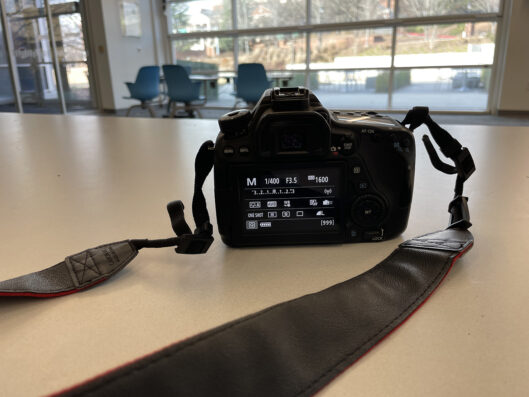Journalism Technology Requirements
Journalism Technology Requirements
Journalism majors are required to have digital equipment that will be used to complete assignments. Most of the required technology are foundational tools similar to what will be used in their first jobs after graduation and it is important students learn to feel comfortable using these tools in class.
Laptops
An Apple laptop with the capability to run the latest versions of Microsoft’s Office and Adobe’s Creative Cloud is strongly recommended for all Department of Journalism students. Those who intend to pursue video or photo-heavy programs are encouraged to acquire a laptop equipped to handle large video and photo projects (see Premiere Pro specs here.)
We recommend the following specs:
- 8GB minimum RAM (16GB preferred)
- Intel 6th generation or newer, or Apple Silicon (M1, M2)
- 2 GB of GPU VRAM
- Mac OS 11 (Big Sur) or higher. Windows 11, 10 (64-bit) V20H2 or later
- 1920 x 1080 minimum display resolution.
The MacBook Pro computers will tend to have better processors and much more robust graphics capabilities which will significantly improve rendering times with video and photo projects. A Windows-based laptop is acceptable so long as it is able to run the same software, but students should know faculty will be teaching to the Apple platform and may not be able to answer some questions. Some course-specific applications may have limited capability on a Windows computer.
Also required are:
- external hard drive(1TB)

Still Camera Specs
Students in the Department of Journalism will need access to a digital single lens reflex (DSLR) or mirrorless camera and interchangeable lens with the following specifications:
- Sensor resolution: 12 megapixel minimum
- Sensor size: APS-C or full frame
- Controls: full manual control over aperture, shutter speed, ISO, focus and white balance
- File format: JPG
- Media: SD card
- Lens: 3x normal zoom (approximately 18 mm to 55 mm for an APS-C sensor; 24-75 for a full frame sensor)
Current camera recommendation: Canon R100 with the 18-45 mm lens or the Canon T7 with 18-55 mm lens if you are taking the Intro to Photojournalism course.
Note: The department grants access to a pool of Canon lenses and accessories for students enrolled in the upper level photojournalism courses. It would be advantageous to select a Canon camera to have access to that equipment. Students who plan to pursue the advanced photojournalism courses are encouraged to consult with Mark E. Johnson at mej@uga.edu.

Video Camera Specs
Students in the Department of Journalism will need access to a compact video camera with the following specifications and accessories:
- Recording format: MP4
- Audio: Mic input, headphone output
- Media: SD card(s) (min. Class 10)
Accessories:
Required:
- external hard drive (1TB)
- Access to the Adobe Creative Cloud Suite (student subscription)
Current camera recommendation: If you don’t have a DSLR/mirrorless camera or camcorder with a microphone input and, ideally, a headphone output, phones with accessories (e.g., a rig such as Beastgrip, a mic such as this for iPhones, and a tripod) are fine.
Wireless mics for DSLR/mirrorless cameras and camcorders, as well as lights can be borrowed from the Field Equipment Supply Room (FESR) upon completion and submission of a statement of responsibility form.
Students taking the advanced video journalism class will have access to a professional camcorder, microphones, lights, and a tripod through the FESR upon completion and submission of a statement of responsibility form.
Students who have a significant financial need may request assistance from the Journalism Department. Ask your instructor for guidance.
Useful Technology Links
- Student Technology Support
- UGA vLab remote access software
- Free software for students
- PAWS-Secure wireless network
- Internet Connection Guide Ethernet in Residence Halls
- UGA Bookstore is an authorized Apple Store on campus.